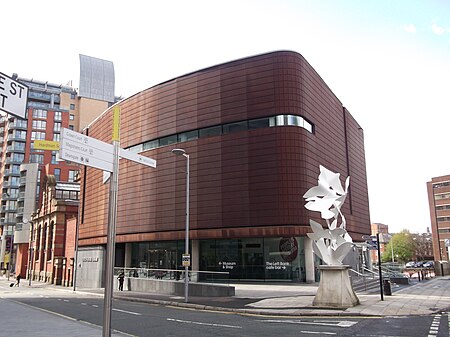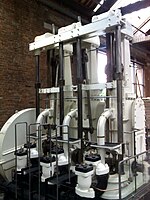People's History Museum

The People's History Museum (the National Museum of Labour History until 2001) in Manchester, England, is the UK's national centre for the collection, conservation, interpretation and study of material relating to the history of working people in the UK. It is located in a grade II-listed, former hydraulic pumping station on the corner of the Bridge Street and Water Street designed by Manchester Corporation City Architect, Henry Price.The museum tells the history of worker's rights and democracy in Great Britain and about people's lives at home, work and leisure over the last 200 years. The collection contains printed material, physical objects and photographs of people at work, rest and play. Some of the topics covered include popular radicalism, the Peterloo Massacre, 19th century trade unionism, the women's suffrage movement, dockers, the cooperative movement, the 1945 general election, and football. It also includes material relating to friendly societies, the welfare movement and advances in the lives of working people.
Excerpt from the Wikipedia article People's History Museum (License: CC BY-SA 3.0, Authors, Images).People's History Museum
Leftbank, Manchester City Centre
Geographical coordinates (GPS) Address Website External links Nearby Places Show on map
Geographical coordinates (GPS)
| Latitude | Longitude |
|---|---|
| N 53.481389 ° | E -2.253333 ° |
Address
People's History Museum
Leftbank
M3 3ER Manchester, City Centre
England, United Kingdom
Open on Google Maps










